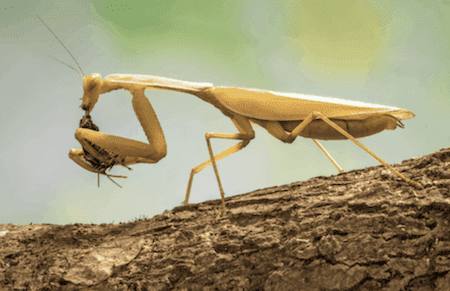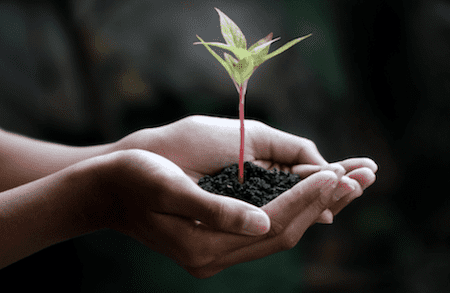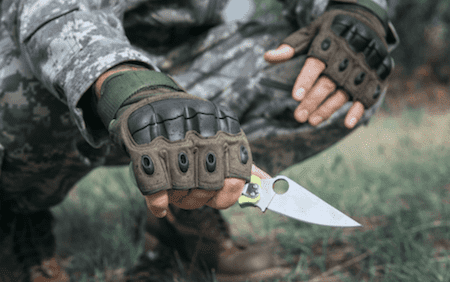Ever dreamed about going out on a survival run into deep forests or mountains?
Camping trips or hiking trips are not exactly something that requires you to learn survival tips. You just pack your own food, clothing, and other necessities when you go out for these kinds of trips.
But if you went on a different kind of hunting or survival trip in the woods or mountains, you need to do lots of things beforehand.
You will need to learn many different techniques and do some research on how to find food in the wild.
Finding the places where natural food is available, looking out for what is edible or not, and knowing how to prepare a meal with such food items is something you need to learn about. That is what we will be helping you with.
Methods Of Finding Food In The Wild
There are various techniques and methods a person can use when finding or foraging food in the wild. Some of these methods are given below in detail.
Method 1: Hunting Animals For Food
Eating meat is very important if you want your health to be well. However, that is not applicable if you are a vegetarian or have any medical issues with eating meat.
Some things to consider when hunting animals is given below:
-
Hunt Animals To Get The Necessary Calories
Usually, when you are out there trying to survive in the wild, the hunger will get to you. It will bring out your craving for carbs since you will be very weak if you have starved for a while.
At that moment, your first plan would be to hunt animals so you can have some protein-enriched food that has lots of calories.
Specifically, mammals have a healthy circulation of nutrients that will be good for your body.
-
Where To Get Access To Such Animals
When hunting for animals, there are some things you should narrow down and focus on to avoid making silly mistakes while being too desperate. Instead of trying to look for large herbivores, start with small game or rodents.
Birds may be harder to attack since they can fly, but they don’t stay alert the way big herbivores like deer or antelope do.
Rodents like squirrels and bunnies may be very fast on their feet, but they can not cover much ground area when they are running.
Plus, they usually graze around open spaces where it is harder for them to run and hide.
-
Finding The Animals And Preparing To Hunt
These kinds of small animals have fixed feeding and resting grounds, so you can always come back to the same place to hunt and find a new batch of game or rodents nearby.
Such herbivores are also easier to prepare as meals because their bodies are small, and the flesh is soft.
Smaller animals tend to have a clean diet where they only eat grass, nuts, worms, small fish, etc.
Eat a small rodent or bird won’t fill your stomach, but you can hunt them in multiple numbers and come back to your camping site or shelter. After you eat a few of these animals, hopefully, your energy will come back.
Method 2: Choosing Edible Insects
Sometimes it is hard to find animals available for hunting. Plus, you need to use lots of focus and energy for that. Insects are an excellent way to replenish your energy when you are too tired or can’t find animal supply.
How to hunt insects properly is given below:
-
Look For Insects To Get Protein
Insects have a high amount of protein in them. When nothing else can be found, you can rely on insects.
Their diet may not be as clean as herbivore animals, but their diets do not include anything carnivorous. The best part about hunting for insects is that you barely have to exert any energy to hunt.
They are available everywhere and anywhere and in abundant supply. You can find all kinds of insects on plants, in the water, on or in the soil and trees, etc.
-
Spots To Find these Insects
Of course, you need to be careful about some insects because not all of them are edible. And sadly, insects will not be as delicious as the animals you can hunt and eat.
But it is a good backup protein if you are stuck somewhere where it is not safe to hunt or if the animals you want to eat are not there.
Also, not all insects can give the protein a human body needs. It could be a small quantity. You need to go looking for specific insects, and they will be found in certain spots, which you can return to whenever you need them again.
Worms, beetles, and their larvae provide the best protein you can get. They are often found available under wooden logs that are rotting and have been destroyed by termites. You will find grubs in the hollow areas or under the logs.
Additionally, you should also check under large, flat, and smooth stones or boards.
Method 3: Fishing For Seafood
This is especially necessary to know if you are stranded near the ocean or somewhere with lots of lakes and streams in the forest.
Some factors to consider are given:
-
Types Of Seafood
There are various types of seafood categories or classes to choose from. Of course, you also need to make sure they are available wherever you are about to fish.
Crustaceans, mollusks, and or any fish, in general, are among the kinds of seafood you can eat in the wild.
Among crustaceans, crabs, lobsters, crayfish, shrimp are commonly eaten even in fancy restaurants. Mollusks include squid, octopi, snails, clams, mussels, sea urchins, etc., and they come in small quantities.
While these are tougher to eat, they can be incredibly delicious if prepared the right way.
-
Where To Find These Marine Animals
Crustaceans are usually found in large colonies in lakes or ponds, right at the bottom.
To find saltwater crustaceans, you need to swim at least 10 meters deep into the water to find them, lying there on the sea bed. Most crustaceans have a similar structure but come in all sizes, colors, and forms.
Their diets are not similar, but it is safe for you to eat them. Mollusks are more commonly found in freshwater lakes, streams, rivers, etc., scattered around the forest. Some may be found in the mud of such water bodies.
-
Fishing To Get The Necessary Fat And Protein
All kinds of fish and other seafood offer many proteins and fat from the flesh, fish oils, and minerals present in their bodies.
Fish are found in abundant supply like insects, especially since they also travel in large numbers.
And as marine animals have a lot of water stored in them, eating fish will also help with dehydration. Some fish are so clean that you can also eat them raw and get a taste of freshwater.
-
Which Fish To Avoid
Not all small marine animals are edible. Some are poisonous.
Maybe touching the fish will not cause harm to you, but the flesh of some fish, when eaten, will end up poisoning your insides. Also, some fish have thorny barriers on their bodies to keep predators away.
You might also get harmed if you try to catch touch. Other fish you should avoid are triggerfish, oilfish, cowfish, porcupine fish, red snapper, pufferfish, barracuda, etc.
Method 4: Foraging For Plants
The only way to succeed in using this method for finding food is by researching before you go out on your trip.
There is no other way to get by safely without eating any plants. Almost all trees, leaves, etc., are green. Different shades and shapes may be there, but most are in green.
There will always be a chance for you to end up eating something that is not edible, only because it looks like something you thought could be eaten.
The leaves and shape might even look like replicas, but there are slight differences that you need to watch out for before you know for sure you can eat it.
There could be specific hints like where the plant should be growing or what kind of tree it grows on, what kind of animals feed on it, how the soil looks around it, etc.
That is why you must take at least a few months to study the different kinds of plants in the forests and mountains that can be used as food and how to find them.
Preparations With Gear And Weapons
Let’s get to learn how to prepare for the food hunt in the wild.
Getting The Equipment You Need
Now that you know what to look for in the wild regarding food and what kind of places these food items may be, you will now need to plan about weapons and other tools necessary for hunting and preparing food.
There are various kinds of weapons you will need to hunt or find certain foods, whether birds, land animals, fish, or insects.
And after that, you need tools to clean or cut out unnecessary parts you can not eat. And then equipment meant for cooking the food you hunted or foraged.
Some food does not require you to cook them, and these food items may be healthier for you if eaten raw.
But they probably will not taste that good, and it will be harder for you to digest them. That is why cooking equipment is also a necessity.
Since some food can be parasitic at first, you should clean them thoroughly before cooking on the fire.
Types Of Weapons To Use During Hunting
Making your own weapons is a skill you definitely need to learn. The reason could be because you did not bring your own in advance, your weapons have perished, or perhaps because you’ve lost them.
And weapons do not only include just making sharp objects to attack animals. It also means making items to help support your hunting.
Some of these items are ropes, baskets, hooks, poles, etc.
-
How To Make Ropes
Ropes can be easily made with plant fibers. Usually, thick hard vines drooping from big trees are also used as quick and easy ropes.
But to make these ropes efficient and strong for long-term use, it is best to rearrange the vine fibers to make a proper rope.
You should rip apart the plant fibers or vines and leave them out to dry. They will shrink when they dry, but they will also get harder and stronger.
Then you can twist or braid the fibers into a nice strong rope.
-
How To Make Axes And Spears
An ax usually consists of a blade and a wooden handle. You can easily make the handle from any log lying around. Just chop and shave the log until it is the perfect fit for your hands.
However, the tricky part is to make the ax head. For this, you will need a large rock or stone.
A flat smooth stone would be the easiest to deal with. After finding the right object, you will have to start chipping away at it till it is a good size as an ax head.
Then you will need to file the edges to make the ax head sharp. You can then tie the ax head tightly onto the wooden handle with some rope.
You can use the same method to make a spear, but in this case, the wooden handle will be more extended like a pole, and the spearhead will be smaller and sharper with a pointy top.
-
How To Make Bows And Arrows
The arrows will be made a bit like the spear but much thinner and lighter since you will be shooting them through the air. Similarly, the wood of the arrow must also be thin and long.
Try to find a piece that has no twists, knots, or loose fibers sticking out. The smooth the arrow body, the better the accuracy will be when it is shot.
Or you could try finding something that is thicker and then shave it down to the slimness you need.
You can make the sharp front part the same way the spearhead is made. The same design as well but in a more miniature form. And if you can’t handle that, then just sharpen the tip of the arrow.
You will need a large piece of wood for making the bow and then begin carving it into a curve that bows should have. It will stay thick, but the curve must balance both sides.
For the bowstring, you can use a thin rope or a fishing line. Once you have strung your bow, your ranged weapon will be complete.
Final Verdict
Of course, knowing how to find food in the wild using various methods and techniques requires you to learn many things beforehand. Besides, you must practice making different types of equipment instead of buying them from shops.
You never know what can go wrong in the wild, so studying these things is very important since you can’t risk anything in the forest when you know there is no one to save you in the nick of time.
Hopefully, the above methods of hunting for food will help you succeed in your survival trip.




